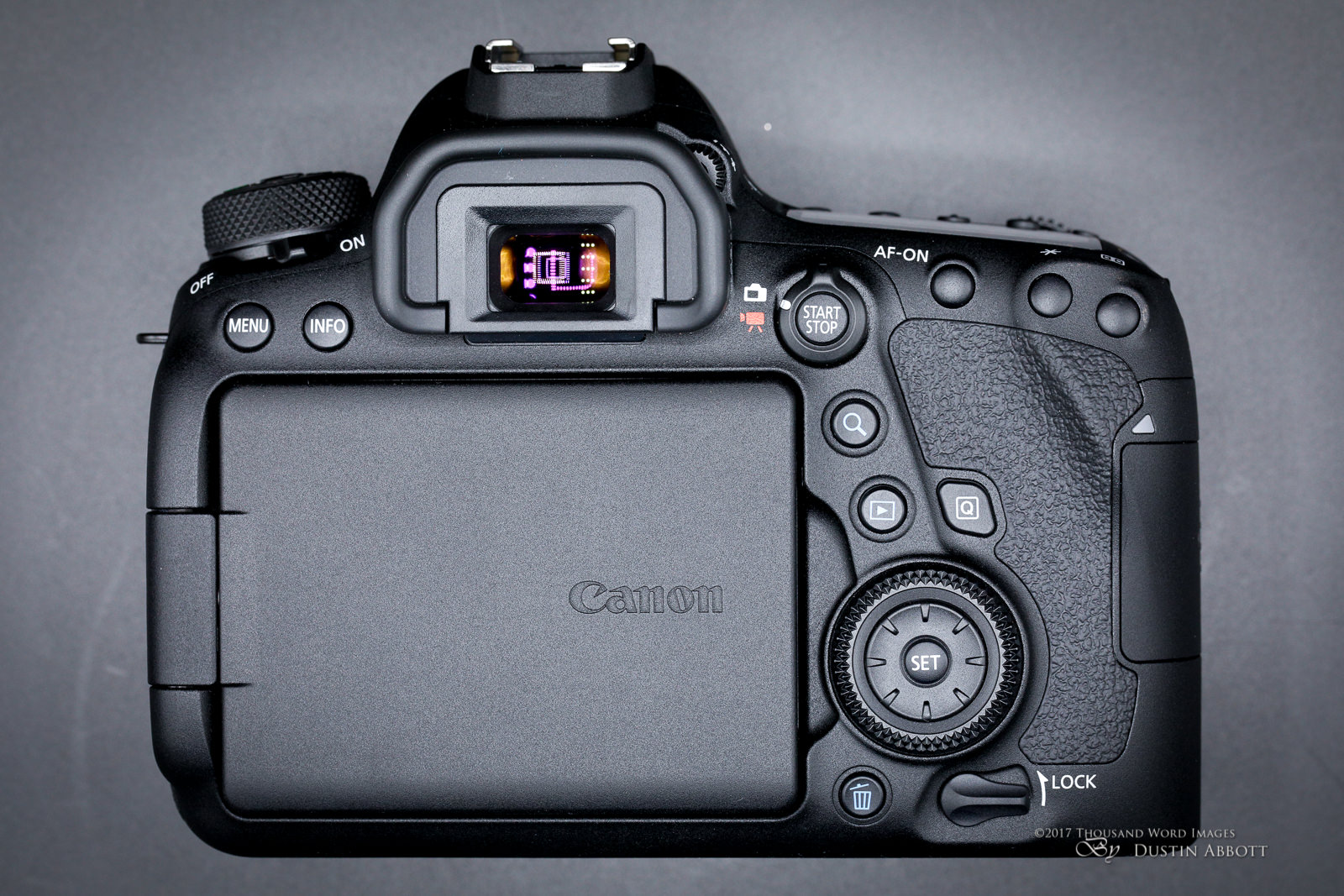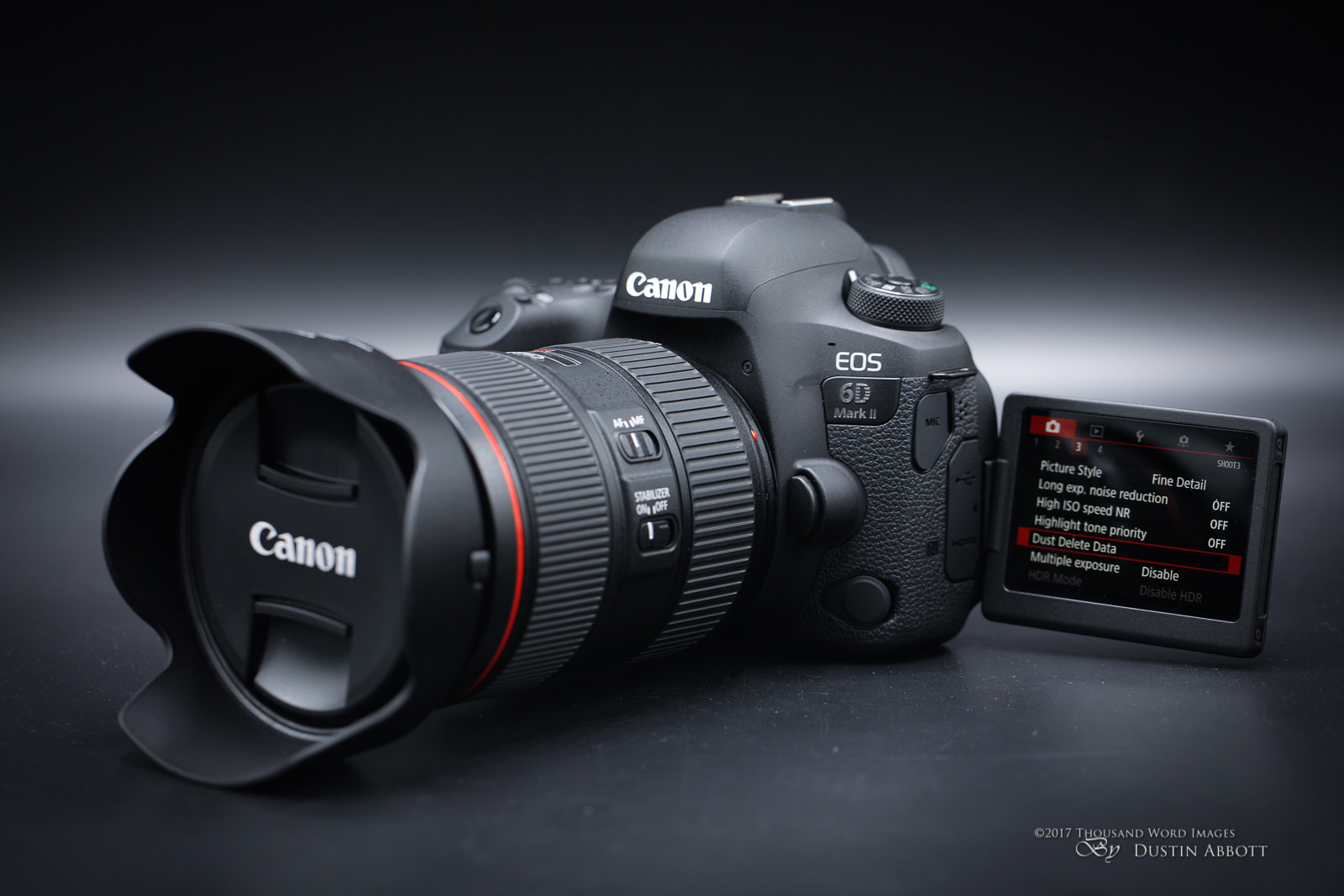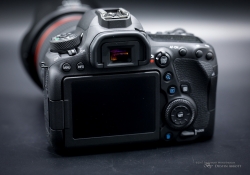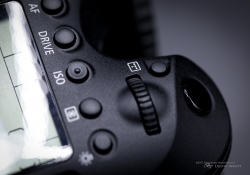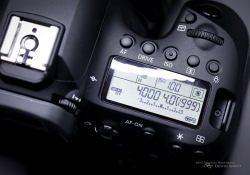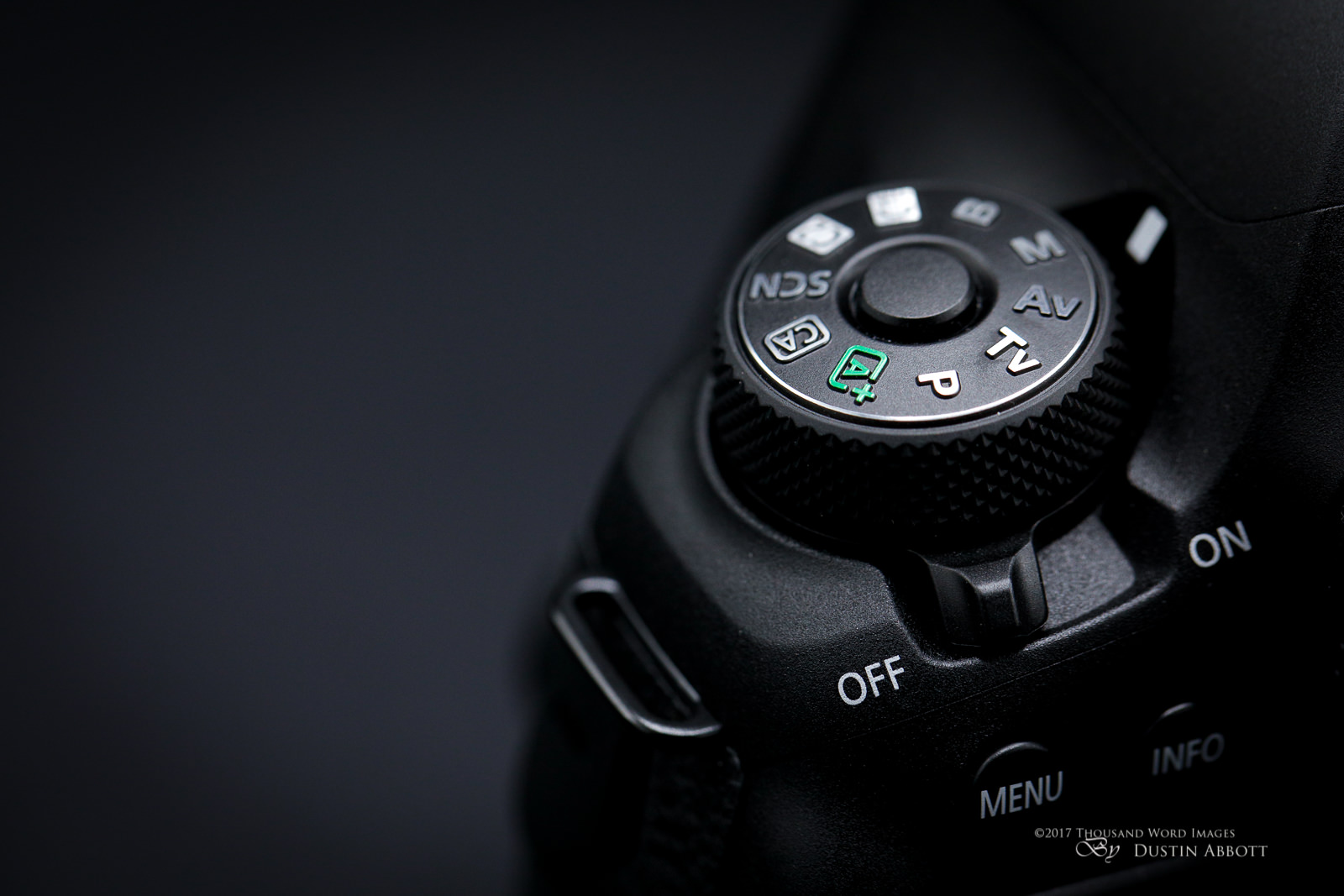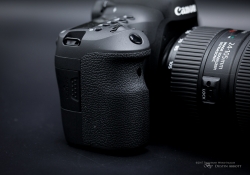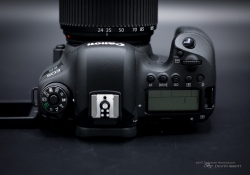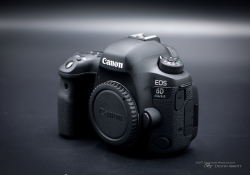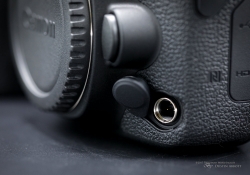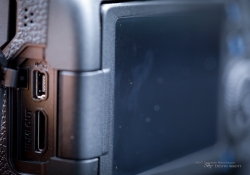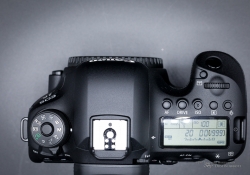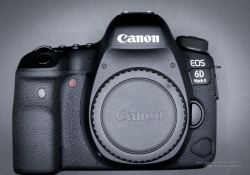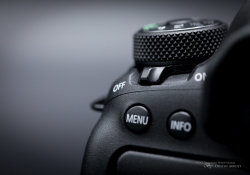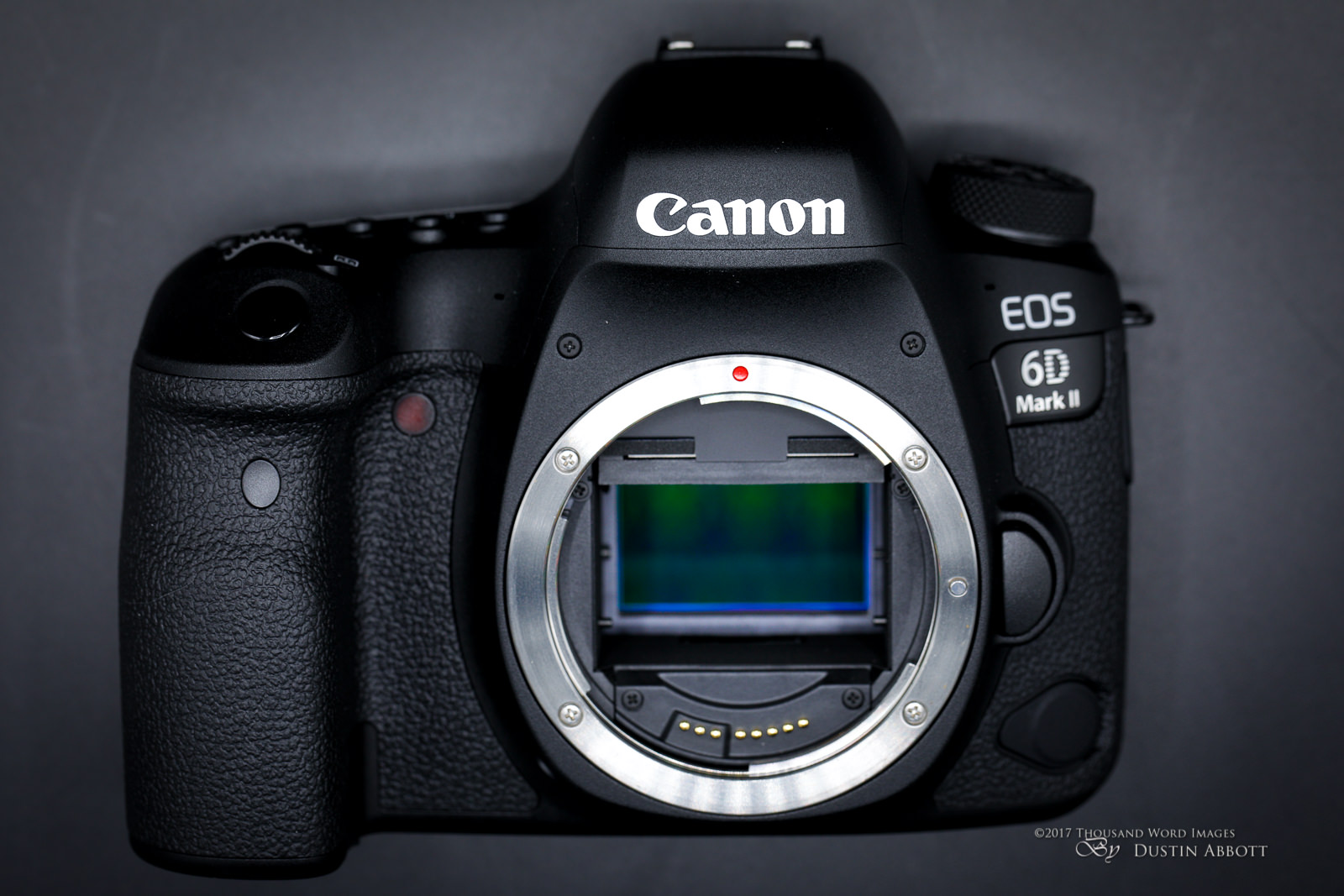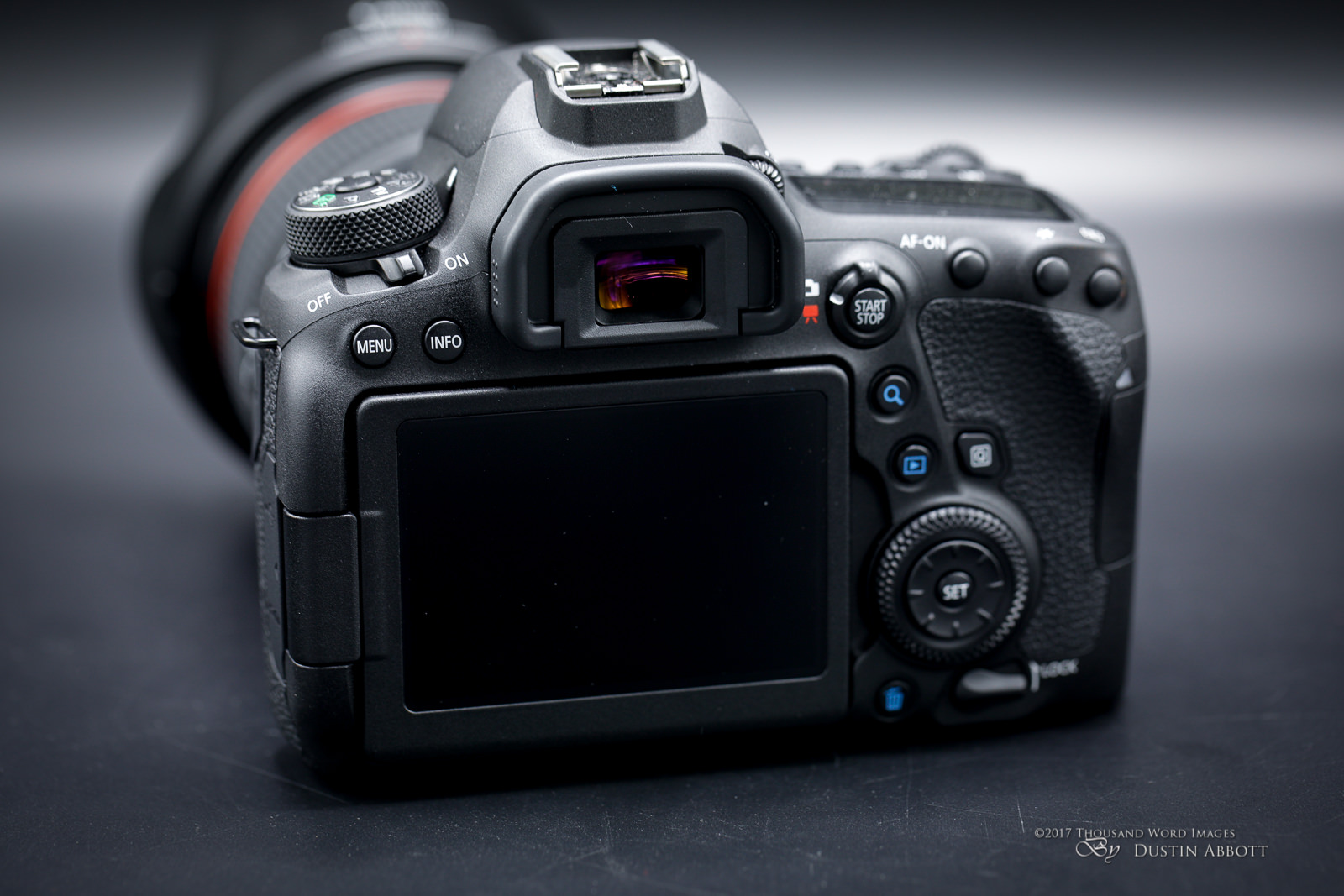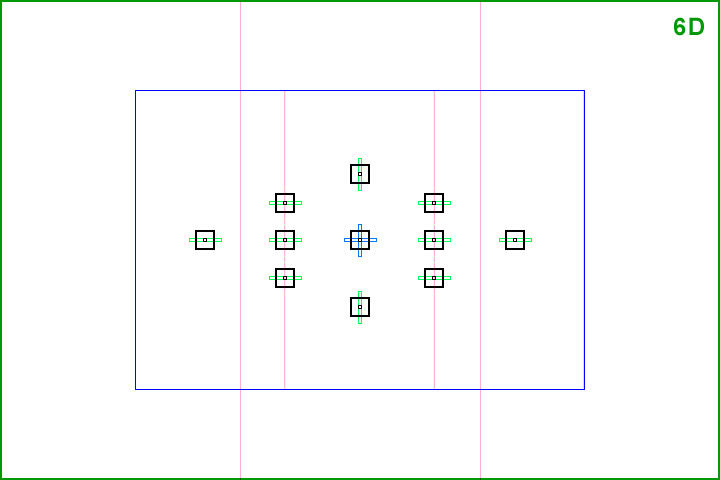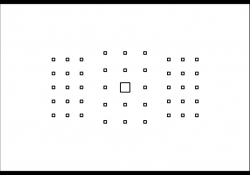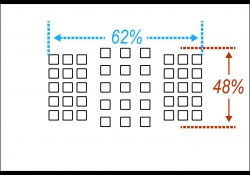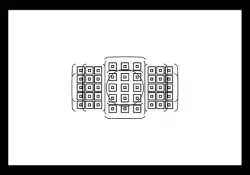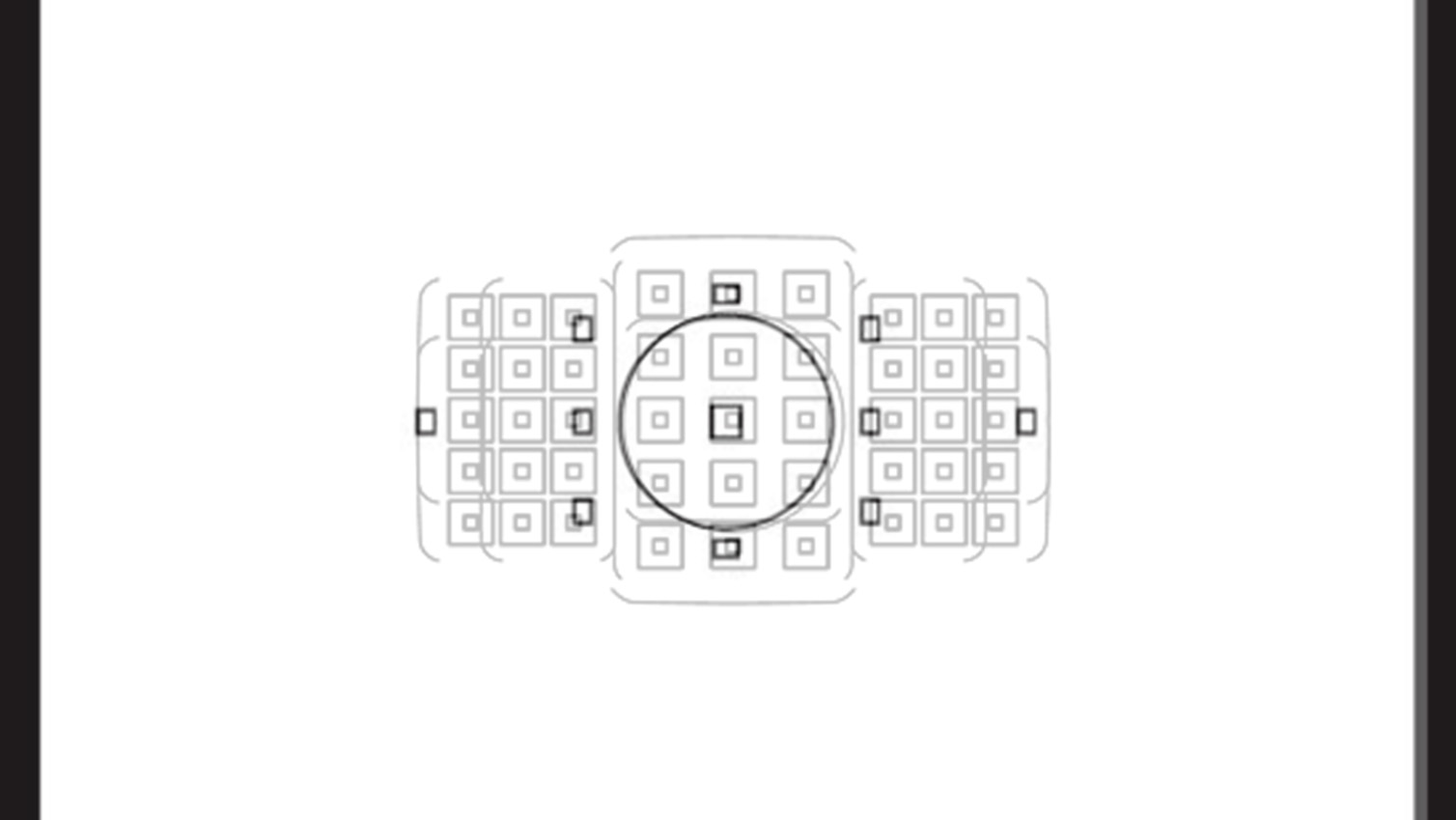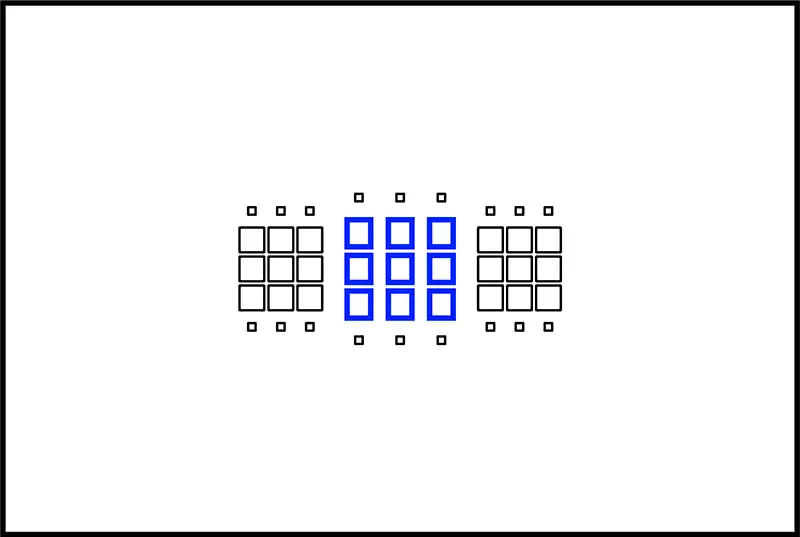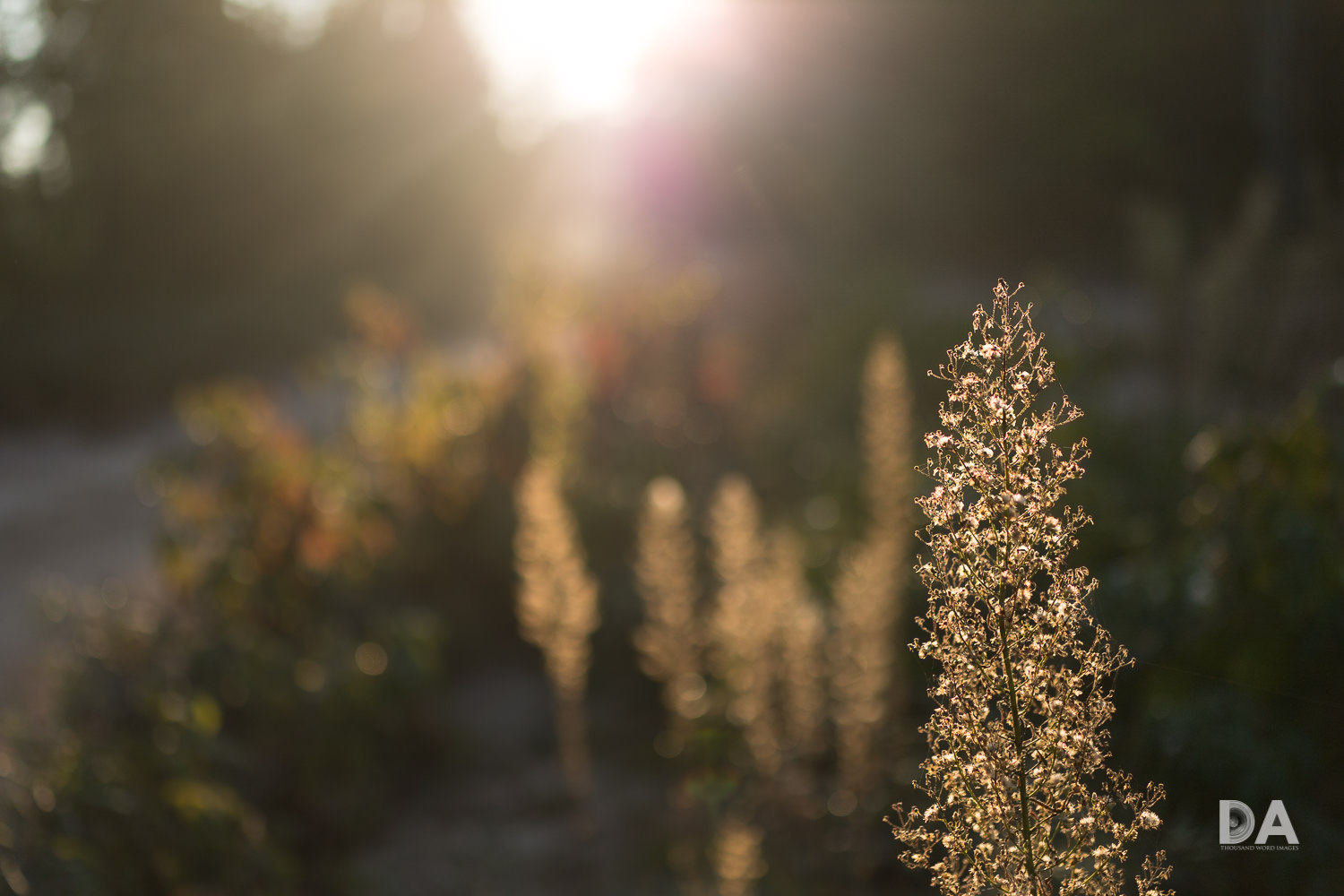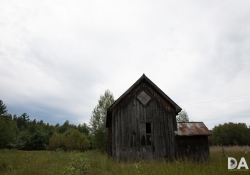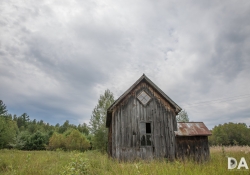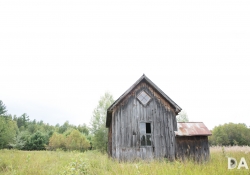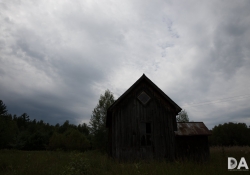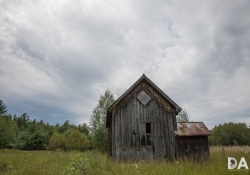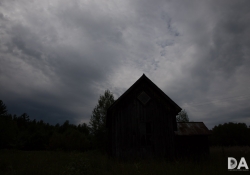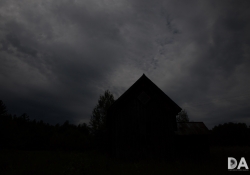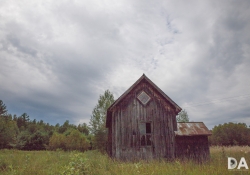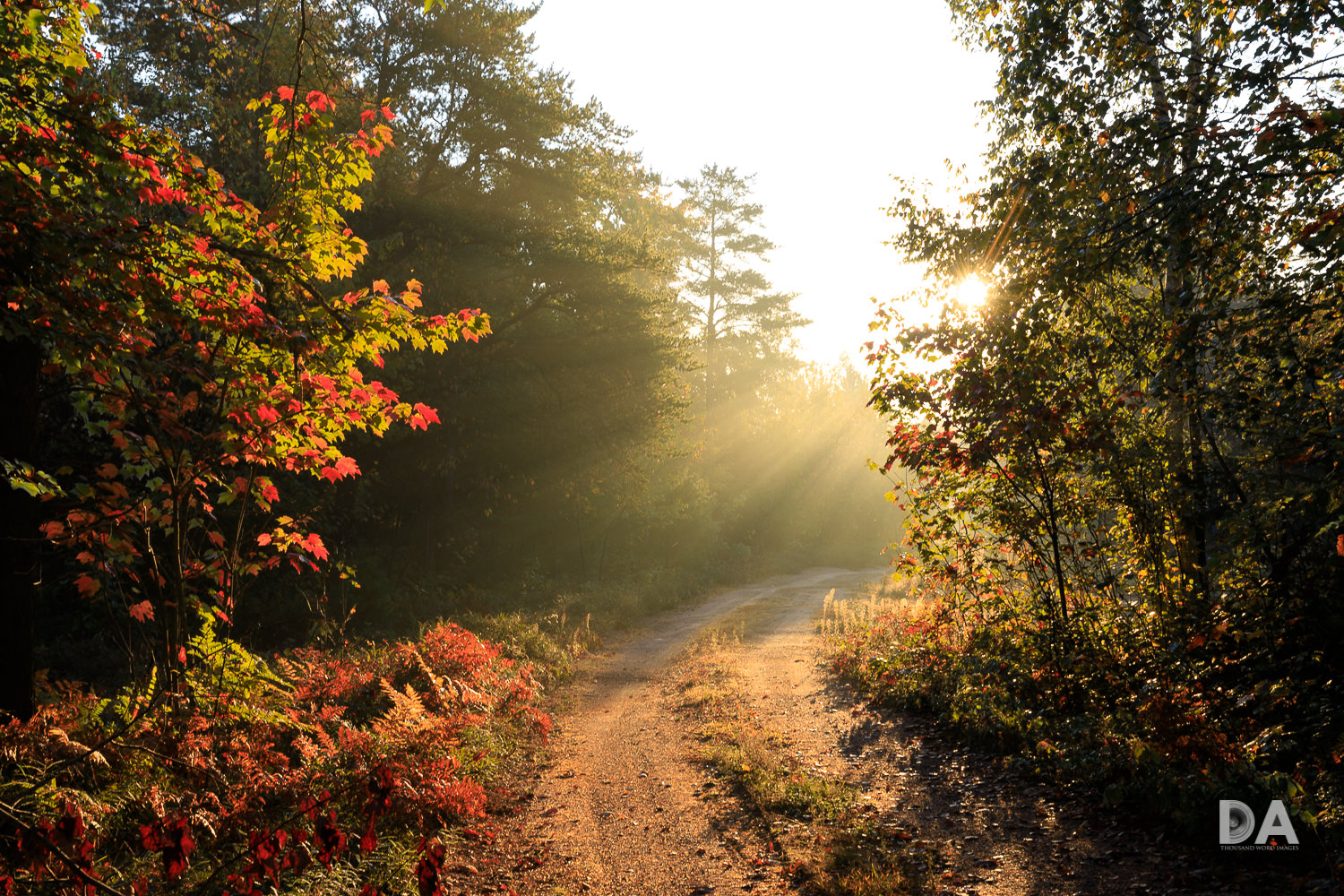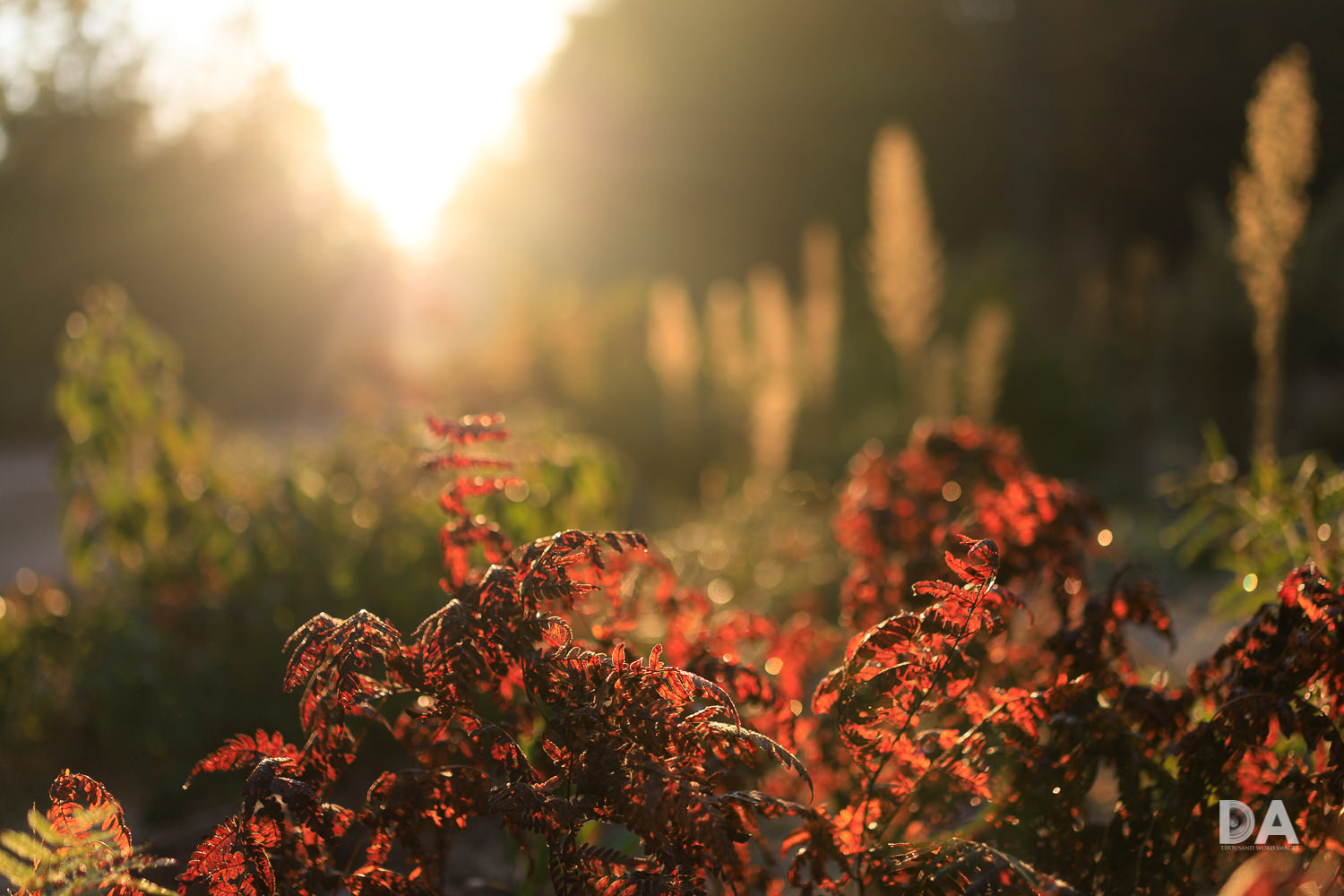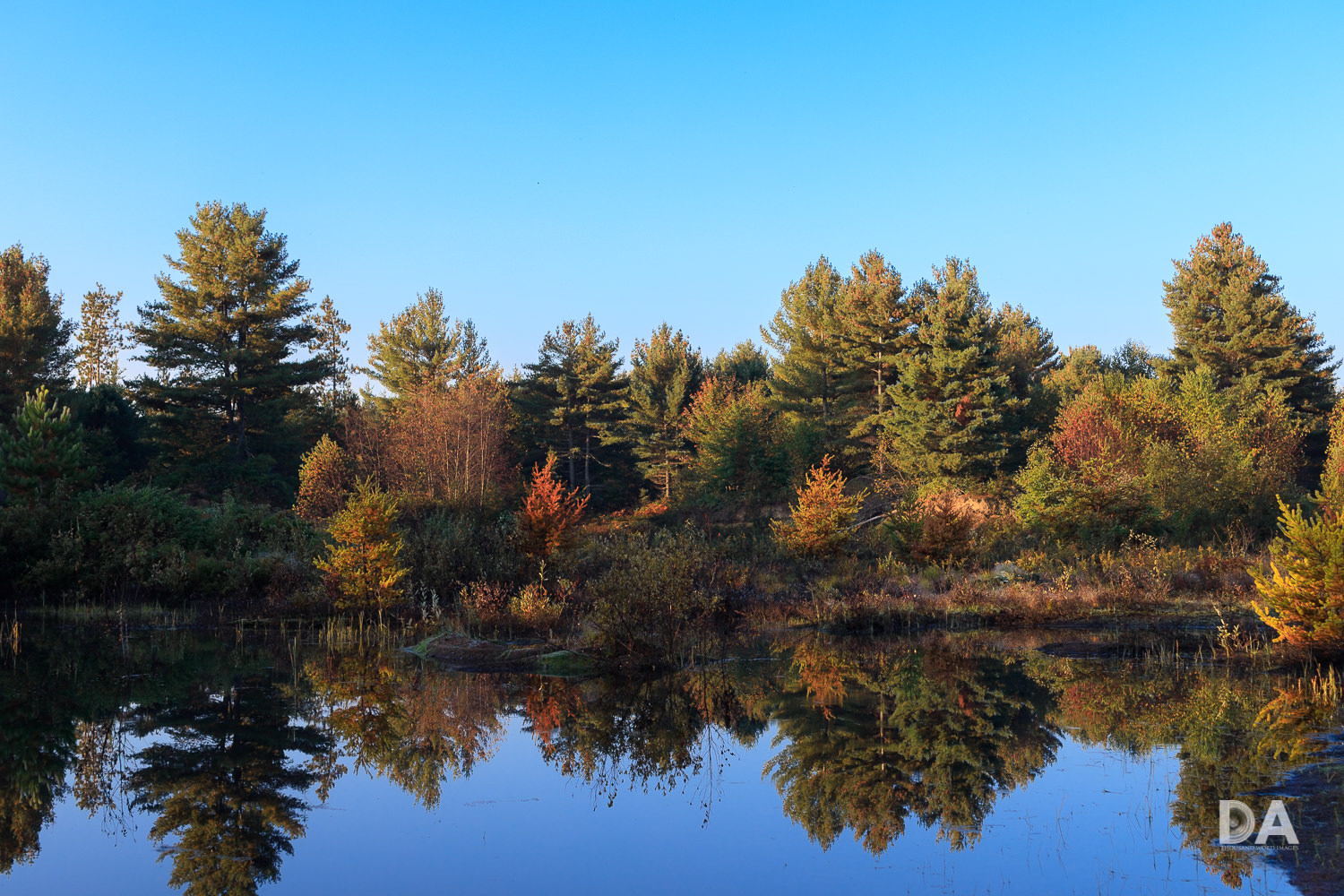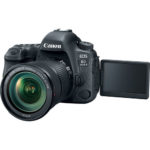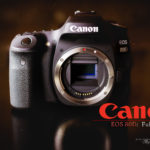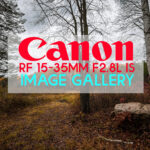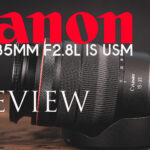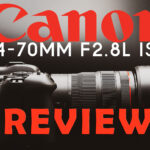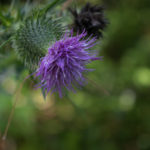One of my most popular articles that I’ve ever written was entitled, “Why I chose a Canon 6D over a 5D Mark III”. The original Canon 6D was a bit of a unicorn: on paper it wasn’t very impressive, with a weak AF system and some obvious limitations imposed by Canon to create separation from the 5D series. But the 6D was a far more capable camera in practice than it was on paper, and most of that came from its exceptional sensor, which I remain convinced was Canon’s best of the last generation. In essentially every metric save resolution it outclassed the 5D Mark III, meaning that Canon’s best full frame image quality actually came from its “entry-level” model. It also added a few (for the time) cutting edge features that the 5D Mark III lacked, including GPS and WiFi connectivity along with a center point with greater sensitivity than any previous Canon body, allowing the 6D to have exceptional accuracy with that center point along with the ability to focus in lower light than competing bodies. Beyond this the focus system was a fairly limited 11 AF point setup, and many people used the 6D more as a center point only “focus and recompose” camera. But all of these facts muddied the water for those looking to upgrade to a full frame model, and the 6D proved to be an exceptionally popular camera for Canon. Fast forward to 2017 and Canon’s announcement of a second generation in the 6D series – the Canon EOS 6D Mark II (6D2).
The popularity of the 6D line was illustrated to me by the many, many viewers and readers of mine who sat out the initial release of the 5D Mark IV to see what the new 6D2 might offer. I too had high expectations, particularly when it was rumored that the 6D2 would receive one of my favorite Canon features – their exceptional Vari-Angle Touch LCD screen. Canon’s articulating screens are excellent, with a great deal of flexibility and usefulness in both landscape AND portrait modes, which simply isn’t true of screens that just tilt. When the spec list was released, I was very pleased (for the most part), as it addressed a lot of areas of improvement that the 6D series needed, including AF system (45 points), higher resolution (26MP vs 20MP), burst rate (6.5 vs 4.5FPS), DPAF, and more. I took it for granted that the 6D2 would continue the 6D’s exceptional sensor performance, as both Canon’s 24MP APS-C sensor that debuted on the Canon EOS 80D and the 30MP sensor on the 5D Mark IV were excellent, with nice advances in dynamic range and high ISO performance.
But while the 6D left me feeling that it was a far more capable camera than its specifications suggested, I am left with a more ambiguous feeling after 6 weeks with the 6D Mark II. Read on to discover why…
Prefer to watch your reviews? I’ve got you covered! Check out my thorough, real world video review below:
6D2 Design and Ergonomics
I would recommend that you watch the following video where I give you an visual tour of the new 6D2 and compare it to both the original 6D and Canon EOS 80D bodies.
One of Canon’s great strengths is their ergonomic design on their cameras. Their grips conform to the hand, the buttons are in logical positions, and the menus are (relatively) easy to navigate. I’ve used a Canon 6D for 5 years and found it generally a delight to use. The one thing that it lacks is something that Canon uses to delineate the mid tier cameras (6D series plus xxD APS-C cameras) from the upper tier (1D series, 5D series, and 70D APS-C), and that is the thumbstick above the circular dial on the back. Other than that, however, the functionality of the 6D is excellent. Canon’s 80D body was very similar, save it added the excellent articulating touchscreen LCD with a lot of redundant touch controls.
The 6D Mark II still lacks the thumbstick, but it is the first of Canon’s full frame cameras to receive their “Vari-Angle” (articulating) LCD screen. This is, to me, a huge upgrade, as it allows a lot more flexibility for getting into different shooting positions (high and low are just two advantages), but also works fine in portrait (vertical) mode. Screens that just tilt aren’t any help when shooting in a vertical orientation, and I vastly prefer the fully articulating screen. It will also easily rotate towards the front for vlogging or monitoring from the front. This makes the 6DII an appealing option for vloggers that are uninterested in 4K (something the 6DII lacks).
The addition of touch to the LCD screen is also a major upgrade for the 6D series, as it makes so many things easier, from Q menu quick selections to menu navigation to selecting focus points in Live View mode. You have the option between “touch to focus” and “touch to capture”. The latter will not only focus but go ahead the take the picture, and I often use this while shooting on a tripod. Canon’s touch screens are excellent; highly responsive, accurate, and quick.
The button placement is near identical to the original 6D. There are two minor differences. The main dial/wheel on the back is slightly smaller to accommodate the touch screen, though most will not pick up on this unless comparing the cameras side by side. The second is a slight but welcome touch. There are three small buttons along the top right of the camera back, with two that are closer together (AE Lock and Focus Point activator). On the 6D1 these two buttons were often hard to distinguish between by touch when your eye was against the viewfinder. The 6D2 has a redesigned ridge that not only helps enhance the thumb rest but also allows each of these three buttons to occupy a slightly different elevation. It’s subtle, but I very quickly noticed it and appreciated how it helps with distinguishing between them by touch.
I also noted that there is a slightly different pattern on the mode selection dial and rear wheel – a bit more of a diamond pattern that provides a bit more grip and is visually stylish.
There is a new button up near the shutter (see photo up a bit) that is borrowed from the design of the 80D, and that small button allows you to cycle through the focus zone options, from single point to zones and groups. It’s conveniently placed, and if you have used either the 80D or 5D series (from the 5DIII onward), it will be both intuitive and familiar.
There is a minor shuffling of compartments on the left side of the camera to make the placement of the microphone input more intuitive. The “tap” point for NFC (Near Field Communications) is on that side as well. Canon adopted the redesign of the remote shutter release port to the front of the camera like the 5D Mark IV. The 6D2 retains a USB 2.0 rather than a 3.0 standard like the 5D Mark IV. I suspect the distinguishing reason is that the 6D2 won’t have the huge 4K files to transfer like the 5DIV.
Here’s a few more “visual tour” photos of the camera:
Memory Card
Many people were/are disappointed by Canon’s decision to give the 6D2 the bare minimum in memory card support. There continues to be a single SD card with similar functionality to the 6D. Both the 5D and the 6D lines basically only upheld the status quo in their newest versions. No new card compatibility, no new card types, and no additional card slots. Truth be told, however, I didn’t personally expect anything new on this front with the 6D. This has been an easy area for Canon to distinguish between its low to mid range cameras and its higher end models. For example, the 80D has one card slot, but the 7DII has two. The 6D2 has one slot; the 5D Mark IV two. Unfortunately, like the 5D Mark IV, the 6D2’s SD card slot only supports UHS-1, not the faster UHS-2 standard.
I’ve heard some make the statement that they refuse to own a camera with a single slot for professional work. I understand the risk of not having redundancy to a secondary card, and everyone has a different risk tolerance. That being said, I have shot dozens (if not hundreds) of events, portrait shoots, weddings, etc… with single card slot cameras. I’ve never had a card failure that resulted in the loss of images from a shoot. Not once. Your mileage may vary, of course, but investing in quality memory cards helps eliminate a lot of that risk. I personally prefer the Sandisk Extreme Pro UHS-1 cards for their durability and high transfer rates.
No amount of complaining at this stage is going to add a secondary slot. If this is a deal breaker for you, then it is best to look elsewhere.
Burst Rate/Buffer
Canon has not improved the card slot situation, but they have managed to deliver both more resolution (20 vs 26MP) and a significantly improved burst rate (6.5FPS vs 4.5FPS). The reality is that this is no longer an area of practical differentiation between the 5D and 6D series, as the 5D Mark IV has a 7FPS burst rate. The 6D2 limits the buffer to 150 JPEG images (at the faster burst rate) and 21 RAW images, while the 5D Mark IV allows unlimited JPEGs and 21 RAW images. If your shooting style is anything like mine, this means that there really is no practical difference in burst rate between these two models. The RAW buffer is a little deeper than in the original 6D, which was rated at 17 RAW images and 1250 JPEGs.
Battery Life
Like other recent Canon camera releases, the 6D2 utilizes the LP-E6N battery, though it is “backwards-compatible” with the older LP-E6 batteries used by many of Canon’s last generation DSLRs. You might get marginally better focus speed or battery life with the newer batteries, but in many situations you won’t notice the difference. What’s interesting is that the 6D2 has many of the same “pieces” as the 5D Mark IV (GPS, touchscreen, processor, etc…), but the 5D Mark IV flies through batteries by comparison. The rating differs by 300 shots (900 for the 5D Mark IV, 1200 for the 6DII). Real world shooting seems even greater, however, with the battery life indicator scarcely budging on the 6DII. After several weeks of review, I’ve not yet had to recharge the battery, which simply wasn’t the case with the 5D Mark IV. Battery life is a definite plus with the 6D Mark II. In real world use it seems to me that the battery life is near twice that of the 5D Mark IV, which can be guilty of underperforming its specifications while the 6D2 seems to outperform them. This is definitely a solid plus for the 6D2.
Weather Sealing and Handling
The 6D2 has enhanced weather sealing in its construction, though I never had an issue with 2 6D bodies that I used professionally for 5 years in all kinds of weather conditions (I continue to have 1 6D body in my kit). The feel of the 6D2 is familiar, though it does have a slightly more “plasticky” feel for some reason than the previous generation camera. This is obviously more perception than reality, as the build quality is, if anything, supposed to be upgraded.
The 6D2 will feel and function in a way that is instantly familiar to Canon shooters. The old saying says, “If it ain’t broke, don’t fix it”, and Canon has employed that philosophy by making very subtle improvements without disrupting the already excellent ergonomic design. The 6D2 feels great in the hands, and I feel that the handling and ergonomics are a definite strength of the camera. And yes, having the Vari-Angle LCD touchscreen is just as welcome as I thought it would be.
Autofocus System
When I and other photographers were theorizing over the 6DII, we would often propose that a full frame 80D would be about right (and in many ways that’s what we got!). The original 6D came with a focus system that was extremely limited (on paper) with only 11 focus points, no focus zones, and few cross type focus points. The one redeeming quality was a super sensitive, super effective center point, which led many people to use just that focus point and employ the “focus and recompose” method. Moving to the outer focus points resulted in less accurate focus most of the time. Here’s a diagram showing the 11 points and their spread in the viewfinder.
I’ve personally made the statement that the 45 point autofocus (AF) system from the 80D would be about appropriate for the 6D Mark II, which is what we got, but something was lost in translation.
A full frame sensor is considerably larger than an APS-C sensor, with about 2.5x times the surface area. We got the 80D focus system, but because of the much larger full frame sensor, the 45 points cover a much smaller area than they did on the smaller-sensored 80D. What was a very nice coverage of a good part of the viewfinder (62% of the width, 48% of the height) shrinks to 39% of the width and 30% of the height. Here’s a look at the difference:
So while there are still 45 points, they are clustered together in an area about the size of the original 6D’s 11 points. This isn’t exactly what we meant when we asked for the 80D’s focus system!
Overlaying the two focus point spreads reveals that the outer two points of the original 6D are actually bit wider than the 6D2, though the 6D2 puts a blocks of points out on the edge rather than one point, allowing one to compose a bit higher and hit the “rule of thirds” zones more effectively.
Still, it is a bit disconcerting to look into the viewfinder and see all of those points clustered together.
That aside, there are some definite improvements to the AF system. All of these points have cross-type sensitivity (compared to just one on the 6D), and the 27 central points across the frame also allow autofocus with combinations that have a maximum aperture of f/8 (like the 100-400mm f/4.5-5.6L IS II + a 1.4x III extender).
This combination simply would not autofocus at all on the 6D (and on only one point with the 5D Mark III). Here’s a few shots taken with the f/8 combination (100-400L II + 1.4x III):
There is also much more room for tracking with either all points active or with certain groups selected, though the concentration of points does mean that you need to keep your subject relatively near the center of the frame. That tight grouping does mean that it is easy for one point to “hand off” focus to the next point when tracking without a gap between them like on the original 6D.
The greater accuracy of the outer points means that you can now use them in composition, which gives you more versatility for how you compose. You can choose different focus point options (5 different modes), from either single point to single point supported by nearby points to groups and then with all points enabled. I was able to use both first and third party lenses effectively using a variety of focus points:
I ran a controlled test to check autofocus accuracy using the excellent Canon EF 35mm f/1.4L II lens at f/1.4. I tested with the center point, the extreme right and left points, and then the extreme top right and left points. Here’s a look at those results, with 5 shots from each position. I defocused the lenses in between each shot, so that it would have to run the full range of focus acquisition each time. I’ve heavily cropped them so that you can easily see focus misses.
I essentially saw excellent results save in the extreme top corner results. The AF system seemed to get a little more confused there and went between grabbing the contrast line of the ruler and the test chart. All in all, however, I’ve had no issue with working with my prime lenses and AF points other than center.
Canon has further improved the low light sensitivity of the center point, so the 6DII focuses with excellence in low light situations.
The final huge advantage to the new focus system is the inclusion of Canon’s DPAF (Dual Pixel AutoFocus), which gives you very snappy autofocus in Live View mode and incredibly tracking abilities. This technology is the best in the business, and means you can autofocus in Live View almost as a fast as through the viewfinder. Switching back to the 6D in Live View mode feels painfully slow by comparison.
The ability to just touch the screen where you want to focus means that you can select autofocus on just about anywhere on the screen and get quick, accurate results. In most situations I certainly prefer using the viewfinder, but this is a huge improvement for tripod work. You can choose whether or not the camera actually takes the picture when you touch the screen or just focuses. If you go back and forth between the 6DII and the 6D you will be shocked at how long it takes the original 6D to acquire focus in Live View mode. The 6DII feels instantaneous with most lenses by comparison. The DPAF in the 6D2 is, of course, outstanding for tracking in video, and has excellent face detection, while the 6D had no video AF of any kind. That’s a huge improvement on a lot of fronts, and, while I’m disappointed by the tight grouping of the AF points, it would be a disservice to the otherwise excellent performance of the 6D2 to dwell only on that.
Sensor Quality
Canon’s original 6D was a bit of an anomaly. It was, in theory, the entry-level full frame camera, and yet when it came to sensor performance it was (in my opinion) Canon’s best of that generation (with perhaps only the 1Dx’s sensor to rival). The 5D Mark III had slightly higher resolution (22MP vs 20MP), but in almost every other detail the 6D’s sensor was superior. Shadow recovery, noise, high ISO performance, color science, and dynamic range were all better than the 5D Mark III, leaving me to write that article on why I chose the 6D over the 5D Mark III. I personally felt that this was a misstep by Canon, as it created ambiguity over which model was superior.
Canon seems to have made a course correction with the current generation, as my head to head tests suggest that the 5D Mark IV sports a sensor that is superior to the 6D Mark II in every way (and is probably Canon’s best sensor at the moment). Part of this advantage is due to Canon simply giving the 5D Mark IV a fantastic sensor, but what also becomes apparent is that while the 6D2 has some give and take with the original 6D, it certainly has no clear advantage other than resolution (26MP vs 20MP). This isn’t to say that that it isn’t an excellent camera, but the 6D set the bar high for the series when it comes to sensor performance, and the 6D2 does little to raise it. Case in point…
Dynamic Range
The early buzz on the 6D Mark II centered around these two words. Sure, the camera didn’t have two card slots, but those in the know would have been surprised if it did. Nor did it have 4K, but Canon has yet to demonstrate that they can successfully implement 4K for the masses (though in their own rights both the 1DxII and 5D Mark IV are solid 4K cameras for certain users). I will confess that I was hoping for 4K inclusion myself, and I would be more tempted by the 6D Mark II personally if it did. But it wasn’t this particular issue that generated the most drama; it was the camera’s dynamic range.
Dynamic range is the amount of light information that a camera sensor can capture. How much light information (like in a sky) can it capture before information is lost and “hot spots” appear? How much information is left in the shadows before the blacks are crushed? Dynamic range can be a key asset for photographers (particularly landscape and natural light portrait photographers), but it can also be a double-edged sword in that without care photographers can produce images that are a bit flat and cartoonish (somewhat like HDR photography used incorrectly). Some of the very best photos use very little dynamic range, preferring instead to allow deep shadows or bright highlights be part of the storytelling technique.
Before the Canon 80D, Canon was taking a bit of a beating in this department. Outside of the pretty decent 6D, many of its cameras lagged behind competitors from Nikon or Sony in this metric. The 80D was heralded as a huge step forward for Canon’s APS-C cameras, and the 5D Mark IV was better yet, bring similar gains to Canon’s full frame lineup. Many photographers (myself included), let out a sight of relief and relaxed. This issue was finally laid to rest, and the drama could just go away.
Guess what? It’s back.
Some of the very first coverage of the 6D2 centered around its supposedly poor dynamic range. Some said that it wasn’t even as good as Canon’s recent APS-C cameras. This took me by surprise, as in my mind I expected the 6D series to continue its standard for excellent image quality. I fully expected Canon to limit the camera in some ways to help maintain separation from the 5D series, but assumed that the sensor would be excellent.
But when I tested the camera for myself (and compared it to 5D Mark IV and 80D), I made some interesting discoveries. I would recommend that you watch this video to get the full picture.
What I found is that when recovering highlights, the 6D2 isn’t bad. It is roughly the same as the 80D, and a little behind the 5D Mark IV. Here’s a few visual comparisons between the 6D2, 80D, and 5D Mark IV when the image has been overexposed by 3 stops and “recovered” in post. In the final series I overexpose by 1 stop, 2 stops, and 3 stops, and then show the image after trying to recover the sky:
As you can see, none of the cameras are exceptional at recovering highly overexposed skies. Hot spots and lost information are everywhere. The 5D Mark IV is considerably better than the other two, however. There isn’t enough difference between the 80D and 6D2 to be worth mentioning.
But where the 6D2 lags behind some of Canon’s other recent releases is in shadow recovery. You can recover a fair amount of information, but it comes at a cost. There is more noise created through shadow recovery, and when you push images heavily (3 or more stops of underexpose), shadows start to take on an unpleasant magenta cast. There is a pretty huge difference between the 6D2 and the 5D Mark IV in the quality of recovered shadows. Here are some similar comparison images and “recoveries” after underexposing by 1-3 stops.
The 6D2 does fine with smaller extremes. A stop or two in either direction can be recovered successfully, but even then I felt that the quality of the contrast and color of recovered areas wasn’t as rich and nuanced as identical images taken with the 5D Mark IV, and more pronounced recoveries introduce a lot of noise and “blockiness” into shadow areas.
My tests don’t suggest that the performance is poorer than APS-C, as results were roughly similar and at higher ISO settings I definitely prefer the full frame 6D2 to the crop sensor 80D in terms of the size and appearance of the noise.
Still, I will freely confess that my expectations were not met in this regard. It’s not as severe as some would suggest, but one is left with the distinct impression that Canon could have (should have) done better.
High ISO Performance
I fully expected the 6D2 to be a high ISO monster. When I reviewed the 5D Mark IV and compared it to the original 6D I found that the improvement was marginal despite the 5D4’s higher native ISO range (ISO 32,000 vs ISO 25,600). The 6D held up very well in the comparison, and years of using it has left me confident in using most all of the ISO range in some applications (event shooting, for example). When I saw that Canon had extended the native ISO range of the of 6D Mark II to 40,000, and elected to constrain the megapixel count to 26, I felt confident that this camera would do very well at high ISO settings. But in this area I am more than a little disappointed.
It’s that magenta cast, which rears its ugly head at ISO settings of around 12,800 and beyond. ISO 6400 looks pretty clean, but higher settings have a magenta cast that only intensifies as you move to ISO 40,000. I don’t feel that the extended range is justified, as the end result at ISO 40,000 has limited applications (I felt there was big drop-off from ISO 25,600 to ISO 32,000 on the 5D Mark IV, too). Watch how the magenta cast to the noise creeps in as we move from ISO 6400 to ISO 25,600 to ISO 40,000.
Detail is still pretty decent at higher ISO settings, and the size of the grain/noise isn’t a deal breaker for me, but the magenta cast is the fly in the ointment.
Color Fidelity
At this stage you might be feeling somewhat depressed, but fortunately I have hit the low points for the 6D Mark II. Truth be told it is an excellent camera in a lot of ways, and it takes great pictures with great color rendition. For day to day shooting (not living in the extremes), I found the images to be excellent and wouldn’t hesitate to use the camera for general purpose shooting. Those excellent ergonomics and optimal button placement make the camera easy to use. If you’ve used either the 6D or the 70/80D series, you can be familiar with the ergonomics almost instantly.
Canon’s color science continues to be excellent, and I find that images are easy to process without the results becoming “cartoonish”. Canon has added the Fine Detail color picture profile (my favorite), and you have 3 custom picture profile modes you can select.
There are also a lot of the new features that have made their way into recent Canon cameras that are supported in the 6D Mark II, making it a more fully rounded camera than the original 6D. I’ll detail a few of those in the section below called “What about a 5D Mark III instead?”
I would recommend that you take a look at the Image Galleries here to see more images along with a dedicated gallery for the kit lens (Canon EF 24-105mm f/4L IS II):
For many shooters the Canon 5D Mark IV is more camera than they need, and they may find the 6D Mark II just right for their needs.
Video Performance
I was initially encouraged when I read the rumored specs of the 6D2. It was assumed (correctly) that the camera would feature DPAF (essentially a given these days) and that it would have an articulating (Vari-Angle) LCD touchscreen. It was also initially assumed that it would have 4K video support. This turned out to be incorrect, which is a shame, as the previous two features could have made for an excellent video DSLR and an exceptional one for Vloggers. What we got instead was a few video advancements like the 1080P 60FPS support and manual audio monitoring during recording (previously one could only alter audio levels manually before video capture) but also some definite regression in that now the codec choices are limited to the IPB in regular (30bps) and “lite” (11bps) versions, but both are MP4, which is pretty heavily compressed. No ALL-i (.MOV) options at all, which means that, frankly, footage looks fairly weak to me, particularly compared to the 4K footage that comes off, say, my Sony a6500. The footage seems somewhat blocky and lacks detail; wholly unsatisfying for 2017. It will be fine for those looking to augment their stills with some periodic video footage, but will not interest any serious videographers. See my video review for some footage from the 6D2 about midway through the video:
On a positive note, the 6D2 does come with Canon’s new in body image stabilization (IBIS), which works in conjunction with lens stabilization (where available), to help provide smooth footage. I own an excellent motorized gimbal unit, and there is no substitute for something like that, but this certainly makes for a significant improvement in smoothing out video footage. Unlike Sony’s IBIS systems, Canon’s only works while shooting video, not stills.
I personally find the video footage from the 6D Mark II very disappointing, as I regularly employ 4K video footage from my 5D Mark IV (upgraded to C-LOG), my Sony a6500, and even my iPhone 6s in my video reviews. For me, personally, this is a significant factor in whether or not I would consider adding the 6D2 to my own personal kit. People complained about the massive file size of the footage from the 5D Mark IV’s MotionJPEG codec, but the footage itself is exceptional (particularly with the C-LOG update). I’m just not impressed by the footage from the 6D2.
What About a 5D Mark III Instead?
I’ve heard the argument where some have concluded that because the dynamic range isn’t superior to the 5D Mark III, then one might as well get the 5D Mark III. And yes, the 5D Mark III still has the more robust build and (in some ways) more complex focus system (at least in terms of total autofocus points and the spread of those points), but this viewpoint overlooks the dozens of smaller features updates that Canon has developed since the 5D Mark III that make everyday shooting so much simpler…features that the 6D Mark II has. Here’s a quick roundup of just some of the new features the 6D Mark II has that the 5D Mark III does not.
- DPAF. This is still the best Live View focus technology out there, enabling you to focus nearly as quickly with the LCD screen as you can using the viewfinder, plus adding great video autofocus.
- Touchscreen LCD. Canon’s touchscreens are the best I’ve seen in cameras, with quick responsiveness and logical implementation. It makes menu navigation and quick setting changes much easier!
- Connectivity: the 6D2 has WiFi, NFC, and Bluetooth, allowing you options for remote shooting, image transfers, and the ability to control your camera with great apps like Cascable.
- GPS. The inclusion of GPS (a feature I find very useful) was one of the things that delineated the 6D from the 5DIII to begin with, and the 6DII has the improved GPS system that was implemented with 5D Mark IV.
- Center point sensitivity. The original 6D had one autofocus advantage over the 5DIII, and that was the extremely sensitive center point that allowed focus down to -3 EV (in very, very dim lighting). And it worked. The 6D could focus in most all lighting conditions with minimal hunting in a way that the 5D Mark III could not. Canon has further expanded that ability in both viewfinder and Live View focus.
- Anti-Flicker technology. I do a lot of event shooting, and under certain lights that continually cycle (the sodium lights often used in large buildings are the biggest offenders!) you get extremely uneven results, particularly when shooting a burst. Canon’s Anti-Flicker technology senses the flicker in lighting and will time the shutter release to avoid it.
- Articulating LCD screen. Canon’s fully articulating “Vari-Angle” screens are fantastic. Unlike tilting screens they can be used effectively in portrait mode, can be turned to face the front for Vlogging mode or monitoring, and also help to keep the screen from being obscured if you use something like a motorized gimbal (I use the Zhiyun Crane). One final nice feature is that the screen can be turned inward to protect it while traveling. I was very excited to see this feature come to Canon’s full frame cameras.
- Built in intervalometer. Those of you who like to shoot timelapses had to resort to third party accessories or tethered shooting to get timelapses, but that is fortunately no longer the case. You have options right in camera for setting intervals and automatically shooting for time lapse, including an 4K video mode.
- 5 Axis Digital IS for video recording. Canon’s technology on this front is not up to Sony’s standard, but the inclusion of some image stabilization (that will work in conjunction with the lens IS if a lens has it) does definitely make a difference in getting smoother video footage while moving.
These are just the features that come to mind at the moment, but all of these make everyday living and shooting with the 6DII more convenient. I personally would choose it over the 5D Mark III (though not over the 5D Mark IV).
Conclusion
The Canon EOS 6D Mark II is a bit of a conundrum for me. I have no doubt that if I owned the camera and used it to its strengths I would be very happy with it. I’m also aware, however, that there are a number of important things that rival cameras are doing as well if not better, and that, frankly, people’s expectations have changed. When the original 6D was released Canon’s Rebel series was still relatively primitive. Now the Rebel series (T7i/800D) has many of these same features, including the 45 AF points, similar burst rate, and equally good dynamic range. I do think that the full frame sensor in the 6D2 has better high ISO performance, but there’s also little progress in that department. There’s also a whole new range of options in mirrorless cameras, and there are a lot of people seriously weighing those options. There’s a lot that I like about the Canon 6D2, but my final analysis is that it is a good camera…that should have been better.
Pros:
- Vari-Angle LCD Touchscreen is a treat
- Improved frame rate makes the camera more versatile
- Solid lineup of useful tools like GPS, WiFi, Bluetooth, Intervalometer, etc…
- 45 point AF system is a significant improvement over 6D
- 27 point f/8 compatibility vs none on 6D
- DPAF is excellent as always
- 5 axis IBIS for video is welcome
- Outstanding battery life
- Excellent handling and ergonomics
Cons:
- Magenta cast to noise at higher ISO settings or when shadows are pushed
- Unimpressive dynamic range
- Video specs and footage disappointing
- AF point spread coverage is underwhelming
- Single SD card slot with only UHS-1 support
Gear Used:
Canon EOS 6D Mark II: B&H Photo | Amazon | Amazon Canada | Amazon UK | Ebay
Canon EF 24-105mm f/4L IS II: B&H Photo | Amazon | Amazon Canada
Tamron 24-70mm f/2.8 G2: B&H Photo | Amazon | Amazon Canada | Amazon UK
Tamron SP 45mm f/1.8 VC: B&H Photo | Amazon | Amazon Canada | Amazon UK
Adobe Photoshop Creative Cloud 1-Year Subscription
Alien Skin Exposure X2 (Use Code “dustinabbott” to get 10% off everything)
Purchasing your gear through B&H and these links helps fund this website and keeps the articles coming. You can also make a donation here if you would like. Thank you for your support.
Great News! I can now offer a 5% discount on all purchases at Amplis Foto, Canada’s Leading Photographic Supplier. Please enter discount code: AMPLIS52018DA in your cart. It is good for everything in your cart, and is stackable with other coupons, too! It will take 5% off your entire order! Proceeds go towards keeping this site going and providing you with new reviews!
Check me out on:
My Patreon: | Google+: | Facebook: | Twitter: | Flickr: | 500px: | Sign Up for My Newsletter :





